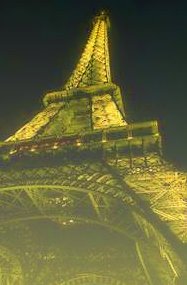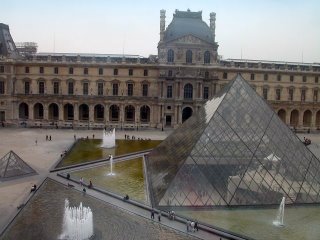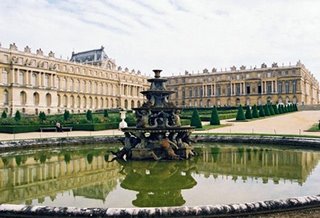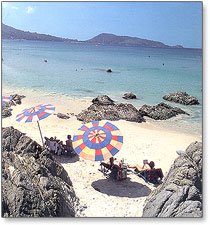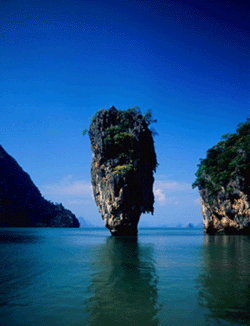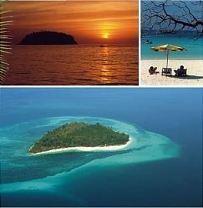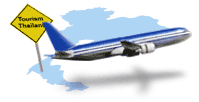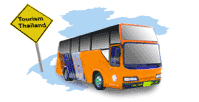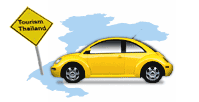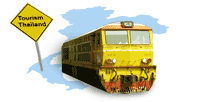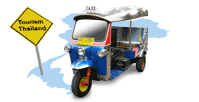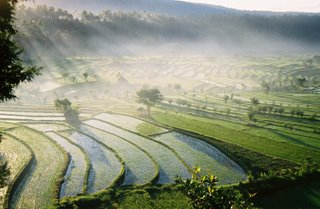 More than four thousands years ago, Bali was an emerald green, tropical rain forest covered the island. The first wave of human arrivals from across the seas brought with them techniques for rice cultivation, new languages and new customs. These early immigrants and others who followed over the years helped to create a haven, providing today's visitors with a wealth of sights and sounds, dances, music, arts and crafts.
More than four thousands years ago, Bali was an emerald green, tropical rain forest covered the island. The first wave of human arrivals from across the seas brought with them techniques for rice cultivation, new languages and new customs. These early immigrants and others who followed over the years helped to create a haven, providing today's visitors with a wealth of sights and sounds, dances, music, arts and crafts.The Paradise Island
Bali has been described by many different names - "The Hidden Paradise", "The Last Paradise on Earth", "Morning of The World", "Island of God", and "Island of Thousand Temples". This Island of Gods is situated approximately on latitude 8ฐ South and longitude 115ฐ East. Bali and the neighboring island of Lombok are the most westerly of the Little Sunda Islands and part of the 13,700 islands that make up Indonesia, the largest archipelago in the world.
The island itself covers an area of 5,632,860 square kilometers, with a volcanic mountain range that stretches from the western tip to the eastern side of the island, with Mt. Agung being the highest peak.
For many centuries, -until today-, Bali has attracted visitors from all over the world. It is so attractive for its colorful ceremonies, natural scenery, and the ever-smiling people. Their colorful religious festivals and ceremonies, the traditional music and dances have been a way of life, and have unwittingly contributed much to the success of tourism here. The Balinese people are predominantly Hindu and their traditional and religious beliefs are as strong today as they ever were.
Bali, The History
In 7th century, perhaps Bali was predominantly Buddhist. Yi Tsing, a Chinese scholar, on his trip to India in 670 AD reported that he visited a Buddhist country called Bali.
The old Balinese kingdom got its glory at 11 century. There is a monument called Gunung Kawi (means The Poet's Mountain) which houses several royal tombs of noblemen and kings of the 11th century. At this period Bali was governed by king Dharmodayana Warmmadewa, also known as Udayana and his wife -a Javanese Queen- named Gunapriyadharmapatni, also known as Mahendradatta. They sent their son Airlangga to study in the Emperor of Java. He at last became the king in Java and rebuilt a new kingdom with two autonomous province Java and Bali. He then appointed his brother, Anak Wungsu, as ruler of Bali. This was the period when the old Javanese language, Kawi, became the language used by the aristocracy, as well as one of the many Javanese traits and customs adopted by the cause.
In 1284, the East Javanese king Kertanegara conquered Bali and ruled over it from Java.
In 1292, king Kertanegara was murdered. Bali got its freedom for about fifty years.
In 1343, a brilliant General named Gadjah Mada from Majapahit - a powerful empire of east Java- with his strong armies came to invade this island. And the glorious period would come to an end. Though he conquered Bali but the General made Bali became an important part of this East Java Empire. This Hindu Majapahit Empire gave Bali the form and structures that stand to this day. The caste system which is still strong until today, the rules and rituals, the arts, the architecture of house and the temple were all passed on from this powerful empire.
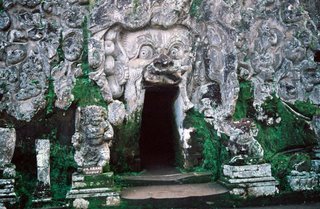 But when Islam successfully gained followers and then gained foothold throughout Sumatra and Java in the 15th century, this powerful Hindu Majapahit Kingdom at last collapsed in 1515 and went into gradual decline. But this new religion was not easily accepted by the people of the kingdom. At the time there were large numbers of Hindu priests, artists, noblemen and Hindu followers which left Majapahit and then escaped to Bali. Here they blended their belief with the traditions of the local people. This blend became the embryo of the Hindu now in Bali. This was the period when "gamelan" - Balinese music instrument, dances, the art of drama and opera (the Gambuh and Arja) and the shadow puppet (Wayang Kulit) would develop and flourish. But this period of the rise of Islam was also the time when the first westerners were beginning to appear which at last built their colonization in this part of the world.
But when Islam successfully gained followers and then gained foothold throughout Sumatra and Java in the 15th century, this powerful Hindu Majapahit Kingdom at last collapsed in 1515 and went into gradual decline. But this new religion was not easily accepted by the people of the kingdom. At the time there were large numbers of Hindu priests, artists, noblemen and Hindu followers which left Majapahit and then escaped to Bali. Here they blended their belief with the traditions of the local people. This blend became the embryo of the Hindu now in Bali. This was the period when "gamelan" - Balinese music instrument, dances, the art of drama and opera (the Gambuh and Arja) and the shadow puppet (Wayang Kulit) would develop and flourish. But this period of the rise of Islam was also the time when the first westerners were beginning to appear which at last built their colonization in this part of the world.The first European came to visit Bali was the Dutch Admiral, Cornelis De Houtman. He and his troop arrived off the coast of Bali in 1598 and friendly welcomed by the king Watu Renggong who was the king of united Bali. Encouraged by this gesture the Dutchmen baptized this island "Jonck Hollandt" or the New Holland. Since this period the influence of the Dutch grew over the archipelago. But with the death of Watu Renggong, the other rulers would rule independently while still paying homage to the Dewa Agung, the king of Klungkung.
In 1840 Dutch successfully began to control the northern part of Bali. Starting from this area then the Dutch took over and occupied the all island.
The Dutch troop with their modern weaponary was too strong for the ill local forces. But they did not want to surrender. So the local kings led their followers in "puputan" - fight until dead. They faced the Dutch troop with their traditional weapon. Those were still standing killed by their own followers, or they killed themselves in order to assure their heavenly path to the glorious paradise to join their ancestors.
This "Puputan" happened between 1906 and 1908 when the kings of Denpasar and Klungkung chose this path than surrender. After this "Puputan", Dutch could successfully control this island.
During the World War II the Dutch were expelled by the Japanese, then occupied Indonesia from 1942 - 1945. On February 19, 1942, the Japanese landed about 500 troops on Sanur beach to occupy Bali.
Though the Japanese occupation was only for three years, but it strongly inspired the people to get the freedom. Some days after Nagasaki and Hiroshima were completely destroyed by atomic bomb, a famous young leader named Soekarno who was part of Balinese declared the independence of Indonesia on 17 August 1945. Balinese people are proud to be the part of this new country.
How to get there
By plane
Most visitors will arrive at Denpasar's Ngurah Rai international airport, which has extensive domestic connections as well as direct flights throughout Asia and Australia. In addition to the usual suspects, a few specialist airlines like Qantas subsidiary Australian Airlinesoperate cheap flights from Australia to Bali. In the low-cost carriet set, Jetstar Asia operate from Singapore while AirAsia operate daily direct flights to Denpasar from Kuala Lumpur and Jakarta
Note that if you are flying internationally out of Ngurah Rai, you are then subject to the airport tax (100,000 Rupiah as at Jan '06) which you would need to pay for in Rupiah so save some bills for the trip out. ATM machines are available at Airport Departure Lobby which accept Cirrus and Plus cards for withdrawals.
By boat
Ferries cross from Gilimanuk in western Bali to Ketapang on the island of Java every 15 minutes, 24 hours a day, and the crossing takes just 30 minutes (plus waiting around, loading, unloading, etc).
There are also services from Padangbai to Lembar (Lombok) every few hours, with the trip taking around 3.5 hours.
Get around
Bali's a fairly big island and you'll need a method to get around if you plan on exploring more than the hotel pool.
By taxi
 Metered taxis are very common in southern Bali up to Denpasar but not available elsewhere. The starting fee is Rp 4,000 for the first two km and the meter ticks up Rp 2,000 per kilometer afterwards. Waiting time is Rp 20,000 per hour. Trips outside southern Bali will incur an extra charge of 30%, as the driver has to go back empty — if day-tripping, it's often cheaper and more convenient to arrange for your driver to wait and take you back.
Metered taxis are very common in southern Bali up to Denpasar but not available elsewhere. The starting fee is Rp 4,000 for the first two km and the meter ticks up Rp 2,000 per kilometer afterwards. Waiting time is Rp 20,000 per hour. Trips outside southern Bali will incur an extra charge of 30%, as the driver has to go back empty — if day-tripping, it's often cheaper and more convenient to arrange for your driver to wait and take you back.By bemo
Bemos, basically minivans which serve as a flexible bus service, are Bali's "traditional" form of transportation, but they have largely given way to metered taxis in the south. Fares on shared bemos can be very cheap, but drivers will often insist that foreign tourist charter the entire vehicle, in which case they'll usually ask for taxi prices or worse.
By car or bike
Car and motorbike rental is available, but may not be safe for drivers used to more formal traffic rules. Consider hiring a car and driver as you can relax, be safe, and not get lost.
More Rome Information / Facts
* Country: Indonesian
* Area: 5,632.86 km²
* Population: 3,150,000
* Country population: 222,781,000
* Language: Balinese, Indonesian
* Currency: Indonesian Rupiah (IDR)
* Time zone: WITA (UTC+8)
* Country dialling code: +62
* Internet TLD: .id
* Religion: Hindu, Muslim
Refer: Wikitravel, balinicerate
